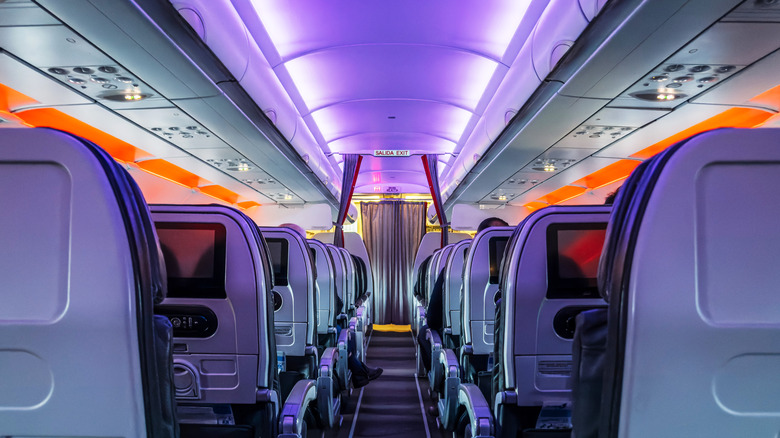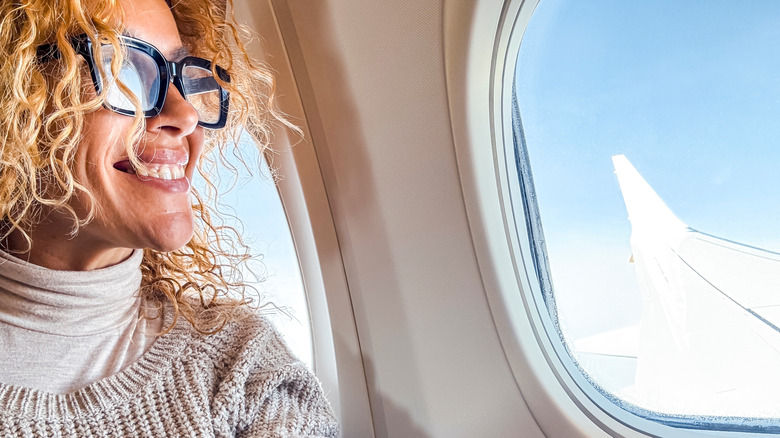How Clean Is The Air You're Breathing In On A Plane? What You Need To Know About Your Health While Flying
We may receive a commission on purchases made from links.
If you're like most people, you probably worry about your health on a flight. You may look up the dirtiest airplane surfaces to make sure you're not touching anything germy. You might avoid drinks with ice cubes during your flight because the water tanks may not be cleaned as often as they should be. You could even fly with a mask on. Another thing you may be concerned about is the cleanliness of the air inside the plane, particularly on long flights. There is good news and bad news on that front. First, airlines actually do have a good system for purifying the air. Dr. Charles Gerba, environmental microbiologist at the University of Arizona at Tucson told NBC, "Airplane air isn't as bad as most people envision. ... On a trip, it's more likely that the food you eat and the things you touch will make you sick."
In fact, most planes use high-efficiency particulate air (HEPA) filters to clean the air of contaminants. Generally, roughly 40% of the air goes through these filters, while the remaining 60% comes in from outside of the plane. Air-purifying expert with the RGF Environmental Group, Tony Julian, told National Geographic that the filters "block and capture 99.97% of airborne particles over 0.3 micron in size." For additional protection, the air blows down from above you, so the movement is up and down, rather than across all the people in front of or behind you (reducing the risk of breathing in the same airborne germs as other passengers). Still, there are some things on the plane that can make you sick, so you should know how to protect yourself.
Things on a plane that can make you sick and how to avoid it
While HEPA filters can remove some bacteria and viruses, as well as dust and pollen, there is still one thing in the air that can get you sick: the breath of other passengers. If you're sitting next to someone who is coughing and sneezing, particles from their breath — which may contain viruses and other microorganisms — are moving through the air. You can ask to be moved, but it may not always be possible. One thing you can do is turn on the air vent above you and have it blowing a little bit in front of your face, so the germs are directed away. You can also wear a mask during the flight. However, you should also know that the worst time for inhaling germs on a plane is during boarding and deplaning, as the ventilation system isn't working the same way.
There is more to the science of not getting ill on a plane that you have some control over. First, the air inside has low humidity, so you should be keeping yourself as hydrated as possible. Bring your own reusable water bottle so you're not drinking from the plane's water tanks. Another reason why people get sick on planes is that they don't wash their hands after touching dirty surfaces. Do so often, and bring antibacterial gel for those times when you don't have access to the lavatory sink. You can even bring a Ziploc bag to put over your hand before using the touch screen or remote on the flight. In addition, you can bring your own disinfecting wipes, like Clorox On the Go Travel Disinfecting Wipes on Amazon. That way, you can wipe down high-touch surfaces, such as the tray table, armrest, seat belt buckle, and latch on the overhead bin.

